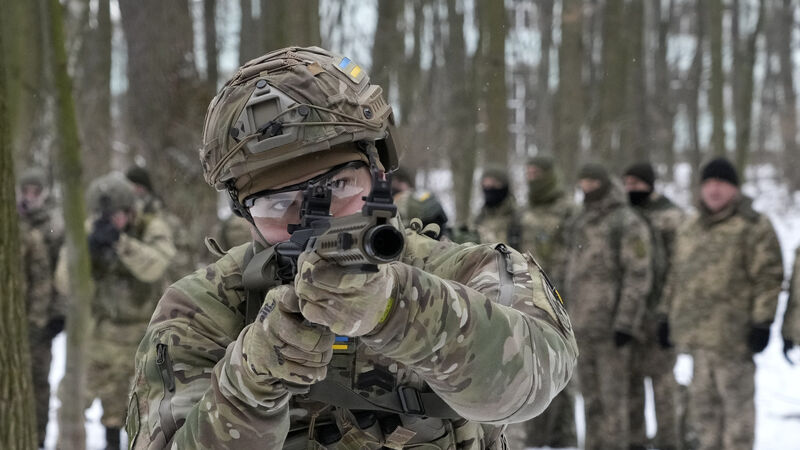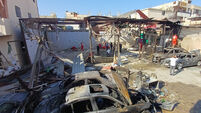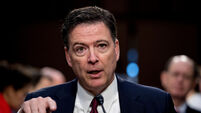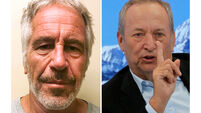Q&A: What next in the tensions between Russia and Ukraine?

Mounting tensions between Ukraine and Russia has led the UK and the US to begin withdrawing some staff and dependents from the embassy in Kyiv.
Here we look at the background to the situation and what might happen next:
Ukraine declared independence from the Soviet Union in 1991 but maintained close economic and cultural links with Russia.
Alarmed by Ukraine’s move towards closer ties with the European Union and a popular uprising that forced out Moscow-leaning president Viktor Yanukovych, Russia annexed the strategically important Crimean peninsula in 2014.
Mr Putin wants Ukraine to remain inside Russia’s sphere of influence, its “near abroad”, and to avoid becoming a Western-style democracy with ties to the European Union and Nato.
Allies are sending more ships & jets to enhance #NATO defensive deployments in eastern Europe. A strong sign of allied solidarity.
— NATO Spokesperson (@NATOpress) January 24, 2022
Offers include:
🇩🇰 F-16 jets to Lithuania
🇫🇷 troops to Romania
🇳🇱 F-35 jets to Bulgaria
🇪🇸 frigate heading to the Black Seahttps://t.co/2GnJKupEA9 pic.twitter.com/UvsRXpkvLT
Russia has denied any intention to invade Ukraine, but has massed an estimated 100,000 troops along the country’s border.
Troops are also taking part in exercises in Belarus, which borders Ukraine to the north.

The UK has also accused Russia of increased cyber activity and widespread disinformation, as well of plotting to install a puppet government in Kyiv, something dismissed as “nonsense” by Moscow.
Russian naval exercises are due to take place in early February, approximately 240km off the southwest coast and within Ireland’s Exclusive Economic Zone (EEZ) but not in Ireland’s territorial waters.

The Government has told Russia that naval exercises off the Irish coast are "not welcome", but Foreign Affairs Minister Simon Coveney has accepted that they are legal.
Speaking to reporters at a meeting of the Foreign Affairs Council in Brussels, Mr Coveney said: "That is in international waters, but it is also part of the exclusive economic zone of Ireland. And so we don't have a power to prevent this happening, but certainly, I've made it clear to the Russian Ambassador in Ireland, that it's not welcome. This isn't the time to increase military activity and tension in the context of what's happening with and in Ukraine at the moment.
"Russia, under International Law of the Sea can, of course, undertake military exercises in international water. But the fact that they're choosing to do it on the western borders, if you like, of the EU, off the Irish coast, is something that, in our view is simply not welcome and not wanted right now, particularly in the coming weeks."
Mr Coveney said that Foreign Ministers will be pushing Russia to "defuse tensions" along the Ukrainian border, where it has amassed troops in recent weeks.
Western nations have responded by threatening sanctions against Russia and supplying arms to the Ukrainian forces.
The UK has around 100 troops providing training, although this number fluctuates, as part of Operation Orbital.
The Defence Secretary @BWallaceMP - “The British government is not in dispute with Russia and the Russian people — far from it — but it does take issue with the malign activity of the Kremlin.”#StandWithUkraine 🇬🇧🇺🇦
— Ministry of Defence Press Office (@DefenceHQPress) January 17, 2022
👇https://t.co/ovFZuZEJAz
Britain's defence secretary Ben Wallace confirmed the UK would supply “light, anti-armour, defensive weapon systems” to the Ukrainian forces, while the US has also sent what it described as “lethal aid” including ammunition.
The Nato alliance is increasing the number of warships and fighter jets in eastern Europe.
US secretary of state Antony Blinken and Russian foreign minister Sergey Lavrov met in Geneva on January 21 and although there was no breakthrough the diplomatic path does not yet appear to have been closed off.
But one of Mr Putin’s key demands is for a guarantee that Ukraine will never be admitted to Nato, something that the allies will not promise, saying that such matters are decisions for Kyiv and the Nato members.
❗ Disinformation circulated by @FCDOGovUK is yet another indication that it is the @NATO Members led by the Anglo-Saxon nations who are escalating tensions around #Ukraine.
— MFA Russia 🇷🇺 (@mfa_russia) January 23, 2022
☝️ We urge the Foreign Office to stop spreading nonsense.
🔗 https://t.co/KShxdSpIB4 pic.twitter.com/5c30waMx6r
US President Joe Biden has warned that any invasion would result in Russia paying a “heavy price”, with severe economic sanctions although he also hinted at divisions in the West about what the response might be to a “minor incursion”.











